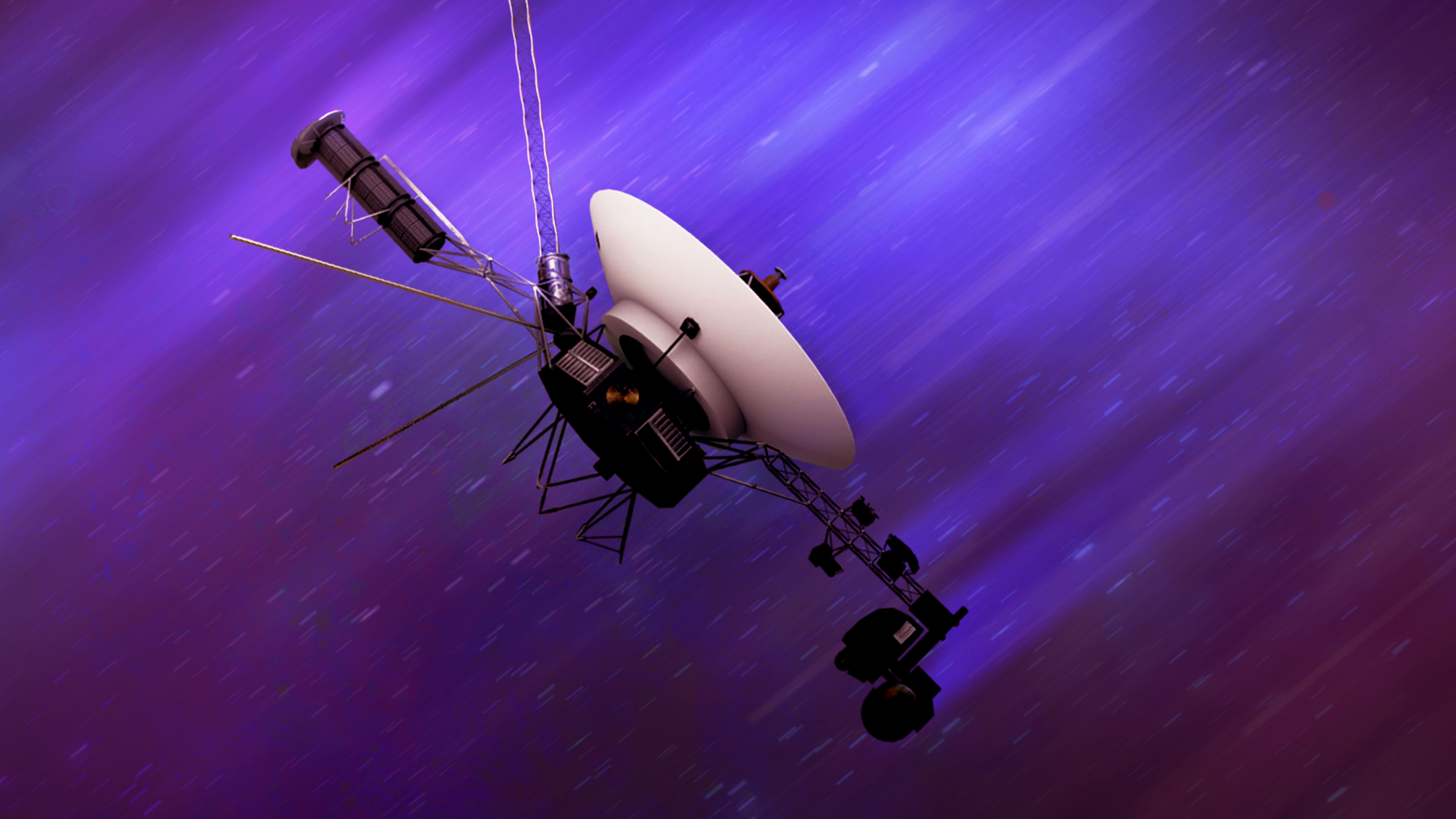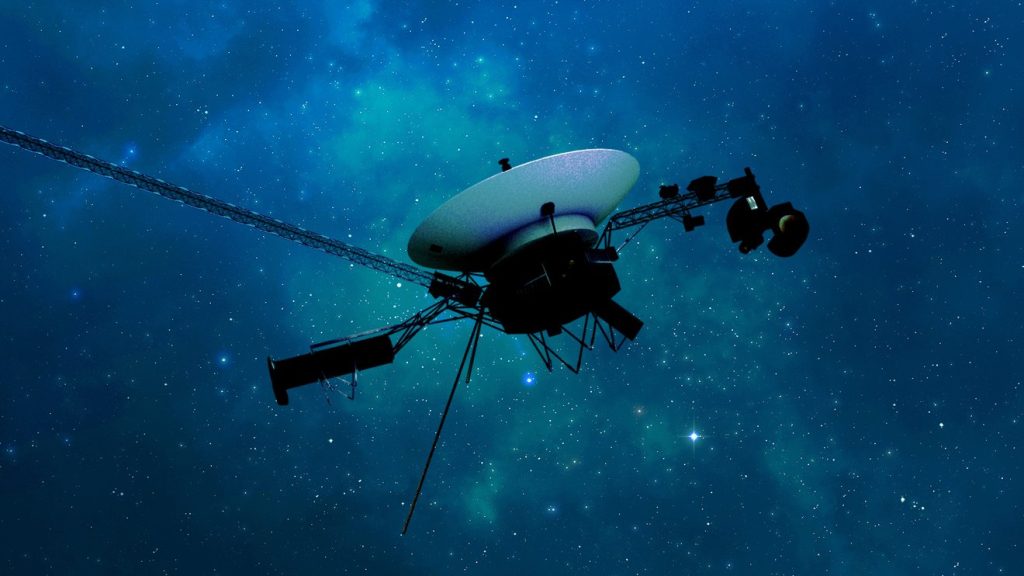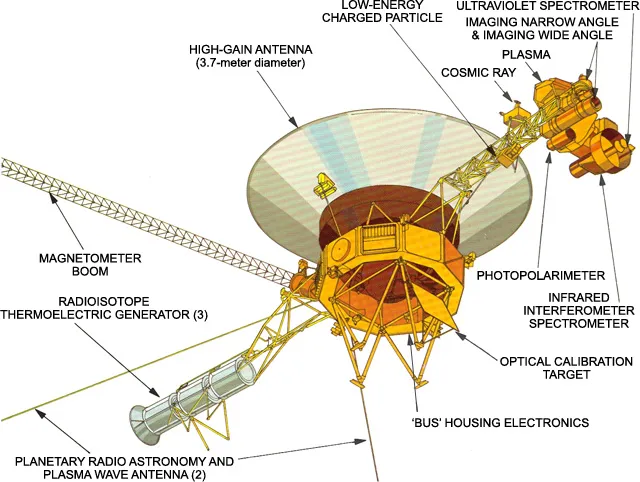Your cart is currently empty!
NASA Saves 46-Year-Old Voyager 1 Mission by Successfully Reviving Frozen Thrusters from 15 Billion Miles Away

In the depths of interstellar space, more than 15 billion miles from Earth, something extraordinary was about to unfold. A spacecraft launched during the Carter administration was facing its greatest crisis yet – not from the hostile environment of deep space, but from the simple passage of time. What had been declared permanently broken over two decades ago was about to be put to the ultimate test.
NASA engineers gathered around their monitors in March 2025, knowing they had just 48 hours to learn whether their desperate gamble would pay off. The commands they had sent racing across the solar system at the speed of light could either save humanity’s most distant messenger or destroy it entirely. There would be no second chances, no backup plans, and no way to know the outcome until it was far too late to change course.
The fate of one of humanity’s greatest scientific achievements now hung in the balance, dependent on a theory that a seemingly hopeless mechanical failure might actually be fixable – if they could perform remote surgery on a machine older than the internet, traveling through the void at 35,000 miles per hour.
The Spacecraft That Refuses to Die
Voyager 1’s story reads like science fiction that became reality. Launched in 1977 with a planned five-year mission to study Jupiter and Saturn, the spacecraft has now been operating for over 46 years – nearly a decade longer than the entire Apollo program lasted. What began as a planetary tour has evolved into humanity’s first probe of interstellar space.
Currently hurtling through the cosmos at 35,000 mph, Voyager 1 occupies the unique position of being the farthest human-made object from Earth. It crossed into interstellar space in 2012, becoming the first spacecraft to send back data from beyond our solar system’s protective bubble. Every day it continues operating represents another day of unprecedented scientific discovery.
The spacecraft’s longevity has repeatedly astonished its creators. Built with 1970s technology and designed when personal computers were still exotic curiosities, Voyager 1 has somehow adapted to challenges its engineers never anticipated. Each passing year brings new age-related problems that require increasingly creative solutions from a mission team working with equipment older than many of their grandchildren.
When Your Backup Plan Starts Failing
Like any complex machine operating decades beyond its warranty, Voyager 1 has experienced numerous component failures over the years. In 2004, the spacecraft’s primary roll thrusters – crucial systems that keep it oriented toward Earth for communication – stopped working when two internal heaters lost power. Engineers concluded the heaters were permanently damaged and switched to backup thrusters.
For twenty years, this backup system worked flawlessly. But by 2024, mission controllers noticed a troubling trend: the backup thrusters’ fuel tubes were gradually clogging with propellant residue. This buildup threatened to completely block fuel flow, potentially as early as fall 2025.
Without functioning roll thrusters, Voyager 1 cannot maintain its precise orientation toward Earth. The spacecraft relies on these systems to keep its antenna pointed at our planet while simultaneously tracking a guide star for navigation. Lose that capability, and the mission dies – not from catastrophic failure, but from an inability to phone home.
“I think at that time, the team was OK with accepting that the primary roll thrusters didn’t work, because they had a perfectly good backup,” explained Kareem Badaruddin, Voyager mission manager at NASA’s Jet Propulsion Laboratory. “And, frankly, they probably didn’t think the Voyagers were going to keep going for another 20 years.”
The Ticking Clock: Earth’s Only Lifeline Goes Dark

The thruster clogging crisis became exponentially more urgent due to an unrelated but equally critical issue: Earth’s only means of communicating with Voyager 1 was about to go offline. Deep Space Station 43, a massive 230-foot antenna in Canberra, Australia, represents the sole facility with enough signal strength to send commands to the distant spacecraft.
Scheduled upgrades to this antenna – essential for future lunar missions and deep space exploration – would take it offline from May 4, 2025, through February 2026. Brief operational windows in August and December provided the only opportunities for contact during this period, but mission planners feared the backup thrusters might be completely clogged by then.
This created a perfect storm scenario: failing thrusters, no way to send repair commands, and a spacecraft that could become permanently lost if problems developed during the communications blackout. NASA engineers found themselves racing against multiple deadlines simultaneously.
Bringing the Dead Back to Life
Faced with this dire situation, the Voyager team made an unprecedented decision: they would attempt to revive thrusters that had been officially declared dead for over two decades. The 2004 failure analysis had concluded that the heater circuits were permanently damaged, but some engineers wondered if the diagnosis might have been incomplete.
Their new theory suggested that the heaters might have failed due to an unexpected circuit disturbance that effectively flipped a switch to the wrong position. If true, remotely commanding the spacecraft to flip that switch back might restore the heaters and reactivate the primary roll thrusters.
This represented more than technical troubleshooting – it required challenging twenty years of accepted engineering wisdom. The original failure analysis had been thorough and logical, conducted by highly skilled professionals who had no reason to expect their spacecraft would still be operating decades later.
The 46-Hour Nail-Biter: Remote Surgery Across the Solar System

Attempting to repair Voyager 1’s thrusters involved a complexity that few people can truly comprehend. Every command sent from Earth takes over 23 hours to reach the spacecraft, with responses requiring another 23 hours to return. This means engineers must wait nearly two full days to learn whether their instructions worked.
The repair procedure itself was fraught with danger. Engineers needed to turn on the dormant primary thrusters, attempt to reset the heater circuits, and restart the heating systems – all while ensuring the spacecraft remained properly oriented. If Voyager 1 drifted too far from its guide star during this process, the newly activated thrusters would automatically fire to correct the drift.
Here lay the critical risk: if the thrusters fired while the heaters were still malfunctioning, the cold propellant could trigger a small explosion, potentially destroying the spacecraft. The team needed to execute their repair sequence with surgical precision, knowing that any miscalculation could end humanity’s most distant scientific mission.
The Moment Everything Changed
On March 20, 2025, NASA engineers transmitted their carefully crafted commands into deep space and began the longest 46 hours of their professional careers. They had done everything possible to ensure success, but ultimately, they could only wait and hope that their twenty-year-old theory was correct.
The tension in Mission Control was palpable as data began streaming back from Voyager 1. Temperature readings from the thruster heaters showed a dramatic rise – exactly what the team hoped to see. The supposedly dead heaters were not only functional but working normally, as if they had never failed at all.
“It was such a glorious moment,” recalled Todd Barber, the mission’s propulsion lead at JPL. “Team morale was very high that day. These thrusters were considered dead. And that was a legitimate conclusion. It’s just that one of our engineers had this insight that maybe there was this other possible cause and it was fixable. It was yet another miracle save for Voyager.”
What Voyager Actually Does Out There

To understand why this thruster revival matters so much, it’s essential to grasp what Voyager 1 accomplishes in its lonely journey through interstellar space. The spacecraft serves as humanity’s only active probe beyond our solar system, continuously recording conditions in a region no human-made object had ever reached before.
Voyager 1’s instruments measure magnetic fields, cosmic rays, and other phenomena that exist in the space between stars. This data provides crucial insights into how our solar system interacts with the broader galaxy and what conditions spacecraft might encounter on future interstellar missions.
The roll thrusters enable all of this science by keeping Voyager 1’s antenna precisely aimed at Earth while the spacecraft tracks a guide star for navigation. Without this capability, the probe would lose communication within hours and become just another piece of space debris drifting silently through the cosmos.
The Incredible Shrinking Mission Team
Managing Voyager 1 presents unique challenges that grow more complex each year. The spacecraft operates on less power than a refrigerator light bulb, forcing engineers to constantly choose which instruments to keep active and which to shut down permanently. Each decision potentially sacrifices valuable scientific capabilities to extend the mission’s overall lifespan.
Recent years have brought a series of age-related crises that would have ended lesser missions. Voyager 1 spent months sending incomprehensible data before engineers diagnosed and fixed a memory corruption problem. The spacecraft has also experienced radio transmitter failures, requiring switches to backup systems that hadn’t been used in over four decades.
Mission teams have had to become archaeological experts in their own spacecraft, digging through documentation from the 1970s to understand systems that current engineers never designed. Some institutional knowledge has been lost to retirement and the passage of time, making each repair more challenging than the last.
Australia’s Antenna: Earth’s Only Voice to the Void

Deep Space Station 43 in Canberra represents a critical bottleneck in humanity’s ability to communicate with its most distant emissaries. While NASA operates three deep space communication complexes worldwide, only the Australian facility possesses sufficient signal strength to reach Voyager 1 and 2 at their current distances.
The antenna’s planned upgrades serve multiple purposes beyond Voyager support. Enhanced capabilities will prove essential for future crewed lunar missions and robotic exploration of the outer solar system. However, these improvements come at the cost of temporarily severing Earth’s connection to its most remote scientific instruments.
This situation illustrates a broader challenge in space exploration: balancing support for aging missions against preparation for future endeavors. Every resource dedicated to maintaining contact with Voyager represents capability that cannot be used for newer projects, yet the scientific return from these veteran spacecraft remains invaluable.
The Data That Makes It All Worthwhile
Despite its age and mechanical problems, Voyager 1 continues generating scientific discoveries that justify every engineering miracle required to keep it operating. The spacecraft’s position beyond our solar system’s heliosphere – the protective bubble of particles and magnetic fields generated by the Sun – provides a unique vantage point for studying interstellar conditions.
Recent data from Voyager 1 has revealed unexpected density variations in interstellar space and provided new insights into cosmic ray propagation. These findings contribute to our understanding of stellar evolution, galactic structure, and the conditions that future interstellar missions might encounter.
The spacecraft also serves an inspirational purpose, representing humanity’s farthest reach into the cosmos. Each successful repair extends not just a scientific mission but a symbol of human curiosity and technological achievement. Voyager 1 carries with it a Golden Record containing sounds and images from Earth – a message in a bottle cast into the cosmic ocean.
How Long Can the Miracles Continue
The thruster revival represents another chapter in Voyager 1’s seemingly endless series of near-death experiences and remarkable recoveries. However, each successful repair becomes progressively more difficult as the spacecraft’s systems continue aging and its power reserves gradually diminish.
Engineers estimate that Voyager 1 might continue operating with at least one scientific instrument into the next decade, but this timeline depends on avoiding major system failures and managing power consumption carefully. Eventually, the laws of physics will prevail, and humanity’s most distant messenger will fall silent.
Even after losing the ability to communicate with Earth, Voyager 1 will continue its journey through interstellar space for millions of years. The spacecraft could outlast human civilization itself, serving as a permanent artifact of our species’ brief moment in cosmic history.
“These antenna upgrades are important for future crewed lunar landings, and they also increase communications capacity for our science missions in deep space, some of which are building on the discoveries Voyager made,” noted Suzanne Dodd, Voyager project manager and director of the Interplanetary Network at JPL.
For now, though, Voyager 1 continues its improbable journey, powered by plutonium and guided by the ingenuity of engineers who refuse to let humanity’s greatest adventure end without a fight. Each day of operation represents another small victory against entropy, another step deeper into the unknown, and another testament to what humans can achieve when they dare to reach for the stars.
